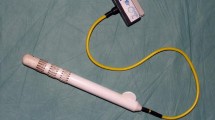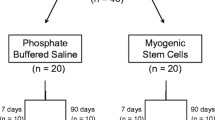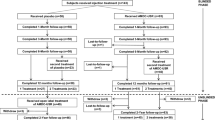Abstract
Our goal was to determine whether periurethral injection of allogenic muscle-derived stem cells (MDSC) could increase the leak point pressure (LPP) in a denervated female rat model of stress urinary incontinence. Cells isolated from the gastrocnemius muscle of normal female rats were purified for a myogenic population by the preplate technique. Three experimental groups were established: a control group (C) had a sham operation without injections; a sciatic nerve transection group (D) had periurethral saline injections; and a sciatic nerve transsection group had periurethral MDSC injections (M). One week following treatment the LPP of groups C, D and M were 25.2±1.9 cmH2O, 28.6±0.8 cmH2O and 36.7±2.3 cmH2O, respectively. At 4 weeks the LPP of groups C, D and M were 25.8±2.5 cmH2O, 18.6±5.2 cmH2O and 44.1±6.6 cmH2O, respectively. Allogenic MDSC significantly improved the LPP in sciatic nerve-transected animals after both 1 and 4 weeks compared to denervated animals injected with saline.
Similar content being viewed by others
Author information
Authors and Affiliations
Additional information
Received: 9 November 2002 / Accepted: 2 September 2002
Acknowledgement This work was supported by NIDDK SUPPORT: NIH RO1 DK55387; DK K12, Pittsburgh Tissue Engineering Initiative.
Rights and permissions
About this article
Cite this article
Lee, J., Cannon, T., Pruchnic, R. et al. The effects of periurethral muscle-derived stem cell injection on leak point pressure in a rat model of stress urinary incontinence. Int Urogynecol J 14, 31–37 (2003). https://doi.org/10.1007/s00192-002-1004-5
Issue Date:
DOI: https://doi.org/10.1007/s00192-002-1004-5




